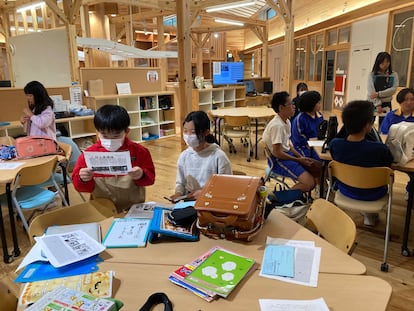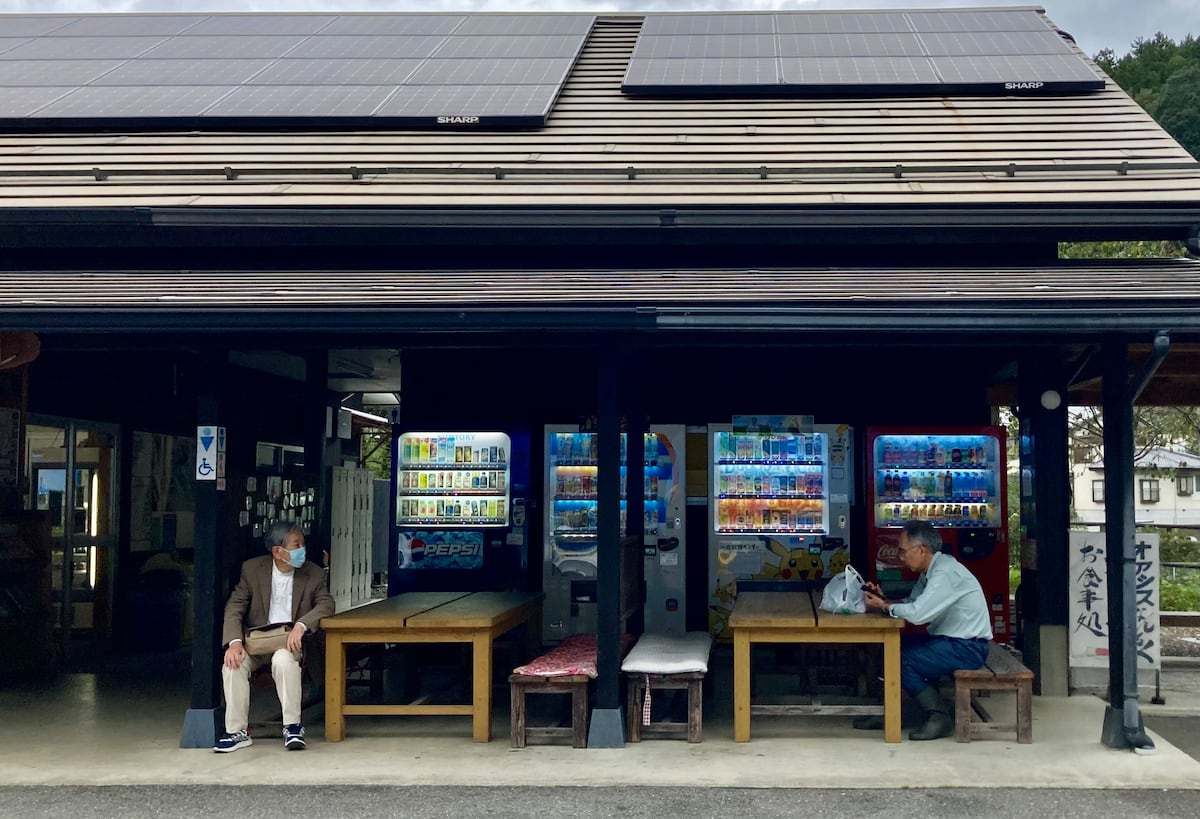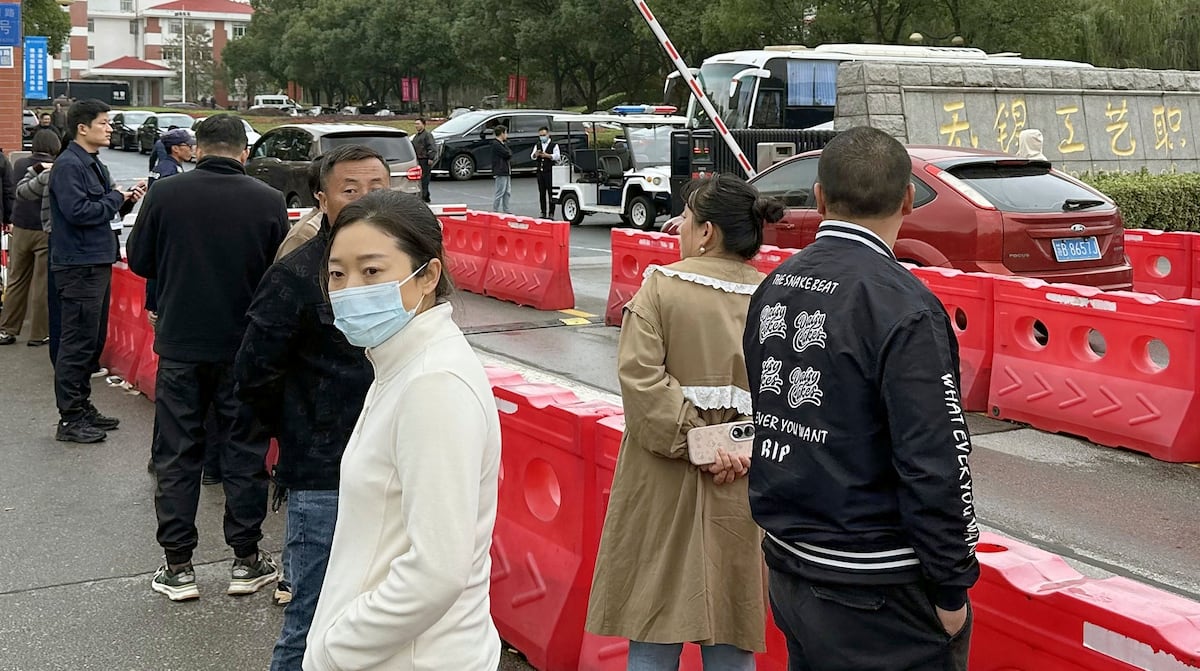Nanmoku is the oldest town in the world’s oldest nation, Japan. Here, more than two thirds of the population is over 65 years old and the number of children does not reach 3%. Around a hundred people live or go daily to the town’s two nursing homes, while at the school, on the other hand, there are more teachers (26) than students (20). Nanmoku has 597 empty houses and there is no way for them to be occupied, while the cities are hit by the very high prices of housing.
The town has about 1,500 inhabitants, the same number of passengers that can fit on a train from Tokyo, the capital, located about 130 kilometers away. The average age is more than 68 years. The population pyramid, inverted to such an extent that it is almost heart-shaped, is the reflection of the double blow of rural depopulation and the plummeting birth rate of the fourth largest economy on the planet. Both have been essential issues in the elections that the country held in September. And a visit may offer some answers.
“I am 65 years old and I can’t believe it: I am the youth of the town,” says Mr. Ichikura, while supervising the workers who are reinforcing a slope to prevent landslides from the hill on the access road to the town. He was born in 1958. As a teenager he fantasized about leaving, but he never did. Of the 30 people in his generation, he says, all of them left. He began working very early in a regional construction company. Recently, he wanted to retire and dedicate himself to farming the family lands, but the company, where he has been with him for almost 50 years, has asked him to hold on: they can’t find employees like him in the area. He plans to retire at 70.
—Will you have a good pension left?
-I hope so!
The works he manages are in front of one of the busiest areas, called Oasis Nanmoku: there is a store selling traditional products, a restaurant with Italian decoration, four vending machines. vendinga telephone booth and some services. An old man who is around 85 years old and passes by responds with humor: “Don’t talk to me, I don’t hear anything!”, and continues on his way. After buying something at the store, he drives off at the wheel of his shiny Volkswagen. Passat red in color.
The town extends along a beautiful valley, following the course of a river, nestled between hills where cedars grow. Its streets are steep. You barely see people in them. You can hear the sound of rushing water and the chirping of birds. Many one- and two-story wooden houses are abandoned, moldy and dilapidated. Many businesses look closed. At the entrance to the Town Hall, as a declaration of intentions, a sign indicates the exact population today: 1,440 people; 753 women and 687 men.
Inside, Satomi Oigawa, 25, one of the few immigrants of the town. Since she was a child she wanted to live in the countryside, at university she specialized in forestry and moved from Tokyo a couple of years ago. Today she is the Immigration Coordinator, a figure that has proliferated in similar towns. In the absence of a real estate agency, he answers calls and shows available homes to potential buyers. About 150 people have contacted them. But very few—“two or three”—have ended up signing a contract.
The repopulation plan consists of convincing people of working age, with children or intending to have them, to move, explains Jin Takayanagi, head of the Nanmoku General Affairs Department. The strategy involves strengthening the care sector: this prevents the elderly from leaving for residences in other locations and at the same time attracts young workers of reproductive age. At the moment it doesn’t seem to bear much fruit. When asked how many babies have been born this year, Takayanagi and Oigawa discuss the number for a few moments and finally answer, “One.”

The young Oigawa says that when she arrived she was not surprised by the silence of a town without children, but by the vitality of the elderly people. “People are in good physical condition. “People are enthusiastic and some 90-year-old farmers are still working.” She regrets, however, living alone. “It’s not easy. If my fever rises I have to drive to the hospital 15 minutes away.” Would like to share. He lives in a house for which he pays 15,000 yen (about 91 euros). In Tokyo, a student can pay about 65,000 yen (395 euros) for 20 square meters.
The phenomenon of Nanmoku is not very different from that of empty Spain. The emigration began decades ago. The vast majority left never to return. It has lost close to 90% of its population since 1950, when it had more than 10,500 inhabitants. By 1980, the number of people over 65 years old already exceeded those under 14; By 2000, the number of elderly people exceeded the number of people of productive age. That is probably the point of no return.
Professor Hisakazu Kato, professor at the School of Political Science and Economics at Meiji University, says that many Japanese have underestimated the future demographic crisis. “When population decline becomes a reality, the sense of crisis will intensify, but then I think it will be too late,” he says in an email.
Behind him baby boom After the war, Japan entered a period of low fertility. In 2008, it lost population for the first time. In 2020, the International Monetary Fund gave a dire forecast: “Population aging and decline will strain Japan’s public finances, as age-related spending—such as healthcare and pensions—rises while the tax base decreases.” The Government estimates that by 2060 there will be one person over 65 for every citizen of working age: that is the point Nanmoku reached in 2000.

Japan today has 124 million inhabitants and an average age of 49.9 years, the highest in the world according to The World Factbook of the American CIA, without counting the microstate of Monaco and the French overseas territory of Saint-Pierre-et-Miquelon. Spain is also very high, in eighth place. The Asian country also has the highest percentage of people over 65 years of age in the world. If the current pace of demographic contraction continues, Japan will have 36 million inhabitants in 2120, according to official forecasts.
“We will have the same population as in the Meiji era [1868-1912]”says Yoshifu Arita, who has been one of the prominent candidates of the Constitutional Democratic Party, the main opposition party, and is a well-known critic of the Liberal Democratic Party (LDP), which has been in power almost without pause since 1955. Recognize that the trend is not easily reversible. “I think Japan needs to move from a political approach oriented towards growth to one focused on maturity,” he commented a few days before the elections, in the middle of the campaign, in his office in Tokyo. He believes that the model must be similar to that of the northern European countries. It proposes raising the consumption tax from 10% to 16% so that all citizens can have free healthcare, care, insurance and education. “We could set up a system where people wouldn’t have to worry about these things as they get older.”
For Professor Kato, it is necessary for the Government to take measures in two directions to stop the coup. On the one hand, improve productivity, through the use of artificial intelligence and other technologies. On the other hand, increase the birth rate. “It is important to reduce the cost of having children and rethink the old traditional roles of women.”

In Nanmoku they have launched a pilot educational project to try to attract families with children. In April they inaugurated a very modern school, made of wood and minimalist design, in which the 20 students from 7 to 15 years old are mixed. The building has a common central space where students meet, and small rooms around where the subjects are taught. “In this one English is given; there, Japanese; beyond that, mathematics…”, lists the vice principal, Kenichi Matsuoka. Silence reigns, the flute of the solitary student in the music classroom can be heard in the distance. The attention, with 26 teachers, is more than personalized. They’re still seeing how it works. They say that the pending challenge is for children of different ages to interact. But the deputy director says that there are already families from nearby towns interested in enrolling their children.
The English teachers are two young British people who are part of an exchange program, and they only have good things to say about the experience of living in the oldest town in Japan. They enjoy children and the quiet country life. They have formed an English conversation club that the elderly neighbors attend. Alice Nixon, 27, says it was “inspiring” to see 90-year-olds singing at the latest karaoke festival.








